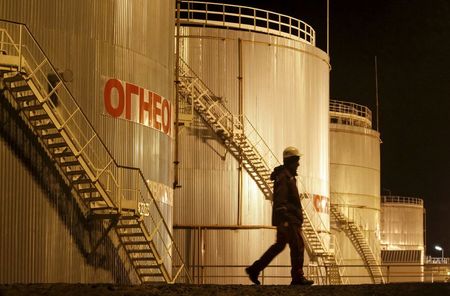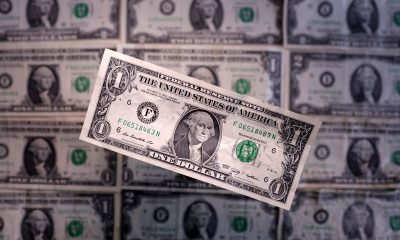Commodities
Goldman Sachs: Oil’s $75 floor should withstand macro fears

Investing.com — Goldman Sachs analysts argued in a note dated Monday that macroeconomic recessionary fears were primarily responsible for the recent 6% decline in Brent prices.
Despite these concerns, Goldman Sachs maintains confidence that the $75 floor for prices will hold, driven by several key factors, including resilient oil demand, limited recession risk, and potential recovery in speculative positioning.
Macro selloff analysis
Goldman Sachs flags that the sharp decline in oil prices over the past week has coincided with similar drops in equity prices and bond yields. This movement suggests that macroeconomic fears, rather than oil market fundamentals, are the primary drivers behind the selloff.
The analysts point out that despite these fears, recent US economic data and oil demand trends indicate resilience.
Resilient oil demand
Analysts note that oil demand remains robust in Western economies and solid in India. US gasoline demand, European oil product consumption, and jet fuel use in OECD countries show above-trend growth.
In fact, US oil demand reached an all-time high in May, up 2% year-over-year, and Indian oil demand in July remained strong, rising 4% year-over-year according to state-owned refiners.
Limited recession risk
While flagging an increase in US recession risk, Goldman Sachs have only raised their 12-month recession odds to 25%.
“They continue to see recession risk as limited given overall fine data, the lack of major financial imbalances, and 525bp of room for Fed cuts,” the analysts said.
The analysts believe that the recent rise in the unemployment rate is less concerning than in previous cycles, given the low rate of permanent layoffs and temporary labor market frictions.
Potential recovery in speculative positioning
Goldman Sachs also sees room for speculative positioning in oil markets to recover. Current speculative positioning is at very low levels, providing potential for a rebound as growth sentiment improves.
The analysts expect resilient macroeconomic data, including lower initial jobless claims in the US and sequential accelerations in US employment and China’s Q3 GDP, to support this recovery.
Downside Risks to the $75-90 Range
Despite the confidence in a $75 floor, Goldman Sachs acknowledges several downside risks to their $75-90 range for Brent prices, especially for 2025. These include:
Recession risk: In a moderate recession scenario, they estimate a potential $30 hit to oil prices by the end of 2025, with Brent possibly falling to $51/bbl.
Potential trade tariffs: The possibility of new trade tariffs, particularly under a potential second Trump term, could weaken GDP and oil demand, further skewing risks to the downside.
Elevated spare capacity: High spare capacity within OPEC+ and comfortable OECD commercial stocks reduce oil’s sensitivity to geopolitical developments and tightening shocks.
China demand risks: Weak demand forecasts for China could result in further downward pressure on oil prices.
Strategic shift to gold
Given the increased downside risks to oil prices, Goldman Sachs advises that long positions now offer the greatest hedging value across commodities for portfolios.
They maintain a bullish gold price target of $2,700 for 2025, citing gold’s hedging benefits against geopolitical shocks, trade tariffs, and financial sanctions.
Additionally, gold is seen as a protective asset against negative aggregate demand shocks and is expected to benefit from likely Fed rate cuts and increased central bank purchases.
Commodities
Oil prices rise; U.S. crude inventories plunge, Russia-Ukraine truce eyed
Commodities
India’s Reliance to stop buying Venezuelan oil over US tariffs, sources say
Commodities
Oil prices climb on Venezuela supply worries

 Forex3 years ago
Forex3 years agoForex Today: the dollar is gaining strength amid gloomy sentiment at the start of the Fed’s week

 Forex3 years ago
Forex3 years agoUnbiased review of Pocket Option broker

 Forex3 years ago
Forex3 years agoDollar to pound sterling exchange rate today: Pound plummeted to its lowest since 1985

 Forex3 years ago
Forex3 years agoHow is the Australian dollar doing today?

 Cryptocurrency3 years ago
Cryptocurrency3 years agoWhat happened in the crypto market – current events today

 World3 years ago
World3 years agoWhy are modern video games an art form?

 Commodities3 years ago
Commodities3 years agoCopper continues to fall in price on expectations of lower demand in China

 Economy3 years ago
Economy3 years agoCrude oil tankers double in price due to EU anti-Russian sanctions



























